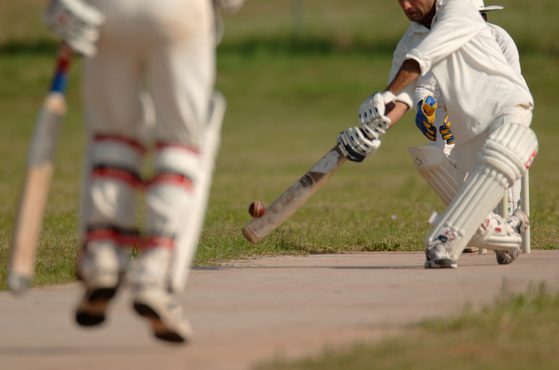As cricket fans prepare for the latest instalment of The Hundred, William Hardwick from our cricket sector team explores how its landmark £520m investment could support the regeneration of historic grounds, transforming cricket venues into year-round assets that help communities and local economies to thrive.
Four years on from its launch, the immense cash injection into English domestic cricket through the sale of six The Hundred franchises marks a transformative moment for the sport. This financial windfall has the potential to support a more profitable and sustainable future — particularly for the 11 counties without a franchise, each of which stands to receive around £30m. For counties such as Leicestershire, Derbyshire, Somerset and Essex — whose annual revenues range between £5m and £8m — this represents a game-changing opportunity.
The challenge now lies in how these counties convert this capital into long-term value. Many are expected to invest in non-matchday revenue streams such as event hosting, conference facilities, gyms and hotels. Others may focus on enhancing their academies or expanding their stadiums — whether permanently or temporarily — to increase their chances of hosting England men’s and women’s international fixtures.
Legal considerations across the property, construction, sport, commercial and charitable sectors aren’t only complex but central to realising these plans. County clubs must think strategically about how capital is deployed into asset-backed projects — balancing ambition with the need to manage risk, protect club identity and maintain continuity. At its best, this next phase of investment can help clubs to reimagine their grounds as inclusive, multi-use spaces that work year-round for both sport and the wider community.
Matchday infrastructure & revenue
Infrastructure development and revenue growth are closely linked in cricket. All ten grounds that currently host England men’s internationals and ICC events have capacities exceeding 15,000. These fixtures are vital revenue sources for counties. Notably, there appears to be a strong correlation between stadium size and franchise allocation in The Hundred. Of the counties with grounds that host England men’s matches, only Durham and Gloucestershire lack a franchise. This trend is likely to motivate other counties to upgrade their facilities.
Counties such as Essex, Sussex, Leicestershire and Kent have already expressed interest or submitted plans to redevelop their stadiums. Their goal isn’t only to host international fixtures but also position themselves for potential inclusion in The Hundred’s projected expansion following the current TV deal, which ends in 2028/2029.
Meanwhile, Surrey and Middlesex have announced plans to build secondary grounds away from their traditional homes at The Oval and Lord’s. These new venues will accommodate fixtures during The Hundred and support broader strategic goals. For Surrey, the second ground will house their academy and expand their women’s programme. For Middlesex — tenants at Lord’s — it offers a new revenue stream and path to greater financial independence. Similarly, Lancashire is developing a second home at Farington, which will serve as the North West Centre of Excellence.
For smaller counties, the funding offers a lifeline. Worcestershire, for instance, has long struggled with flooding at their historic New Road ground. While flood prevention measures have been considered, the costs are likely unsustainable. As a result, the county may be forced to leave its home of 126 years — raising wider questions about resilience and location in future stadium planning.
Diversification strategies
In recent years, a quiet shift has taken place at cricket grounds across the UK. Once viewed primarily as seasonal venues, many are being repurposed into year-round, revenue-generating assets through strategic development. At the forefront of this movement is Surrey County Cricket Club, whose redevelopment of The Kia Oval has shaped a new commercial blueprint for clubs nationwide.
This period of opportunity for regeneration is also fostering innovation. One of English cricket’s long-standing challenges — the weather — was starkly highlighted during the rain-affected fourth Ashes Test at Old Trafford in 2023. In response, proposals have emerged for an indoor cricket stadium, with Manchester being considered as part of the broader redevelopment of Old Trafford. The venue would be multi-purpose, capable of hosting concerts and other major events. The concept draws inspiration from Australia’s proposed Macquarie Point Stadium in Hobart.
These ideas reflect a growing shift in mindset, viewing stadiums not just as venues, but catalysts for place-based growth. The future of cricket infrastructure lies in creating places that deliver for clubs and communities alike.
The Surrey model — hospitality & long-term growth
Surrey's ambitious redevelopment of the area surrounding The Kia Oval has been recognised as a pioneering model in UK sport. Central to this transformation is a new hotel adjacent to the ground — a move that has diversified income streams and connected the club to London’s wider visitor economy.
More than just bricks and mortar, Surrey’s approach reflects a broader strategy of building resilience through regeneration. Its bold reimagining of the Vauxhall End two decades ago has since influenced redevelopment plans across the country.
Cricket grounds are naturally underutilised during the off-season, so introducing hotels, conferencing facilities and hospitality helps to ensure consistent footfall and commercial viability year-round. This reflects a wider trend in sports-led regeneration — blending sport, leisure and enterprise to create vibrant urban spaces.
Delivering these projects involves a range of legal challenges — from joint venture structuring and land use rights to planning, licensing and operator agreements. Yet when managed effectively, they unlock long-term value and bring clubs closer to the communities they serve.
As Andrew Umbers (Partner at Oakwell Capital) puts it: “In English cricket, First Class Counties increasingly recognise the need to reduce reliance on ECB funding and instead adopt a year-round revenue-generating strategy.
Rising central costs — for example, through central player wage inflation — as well as potentially reduced ICC distributions (as a result of the Disney-Reliance merger) are important factors that FCCs will be considering when budgeting for future ECB distributions and planning their future finances.
In 2023, ECB distributions for Surrey and Lancashire accounted for 6% and 14% of their total revenue respectively, compared to Northamptonshire and Leicestershire on 71% and 67% respectively. This contrast highlights the financial sustainability and long-term benefits of a well-executed, diversified income model”.
Lancashire, Warwickshire & Durham follow suit
Inspired by Surrey’s success, other counties are adopting similar models. At Emirates Old Trafford, Lancashire County Cricket Club has delivered the Hilton Garden Inn — a four-star hotel with pitch-facing rooms — as part of a 50-acre mixed-use regeneration scheme developed in partnership with Ask Real Estate, Tesco plc and Trafford Council. This project has helped Old Trafford to regain Test Match status and establish itself as a key venue for sport, hospitality and entertainment.
Warwickshire County Cricket Club are now progressing plans for an on-site hotel at Edgbaston. Its aim is to turn the ground into a year-round destination for sport, business and the community. While Edgbaston has long been a premier cricket venue — hosting international matches, domestic fixtures and a vibrant local community scene — recognising the need to ensure year-round financial sustainability and create a more diverse revenue mix, the club has set its sights on this ‘campus-style’ masterplan. Warwickshire’s redevelopment ambitions build on Edgbaston’s strong legacy of growth and innovation, marked by milestones such as the £32m Pavilion Redevelopment in 2011, which modernised facilities and secured its status. The Edgbaston Experience Club exemplifies the club’s success in creating premium hospitality offerings that generate revenue beyond matchdays. The stadium also serves as a vibrant community hub, hosting indoor cricket, youth programmes and local events year-round.
Durham, meanwhile, has submitted planning applications for the redevelopment of the Riverside ground in Chester-le-Street, with proposals for improved hospitality, education and event facilities. This includes a £28m hotel development adjacent to the stadium. The proposed development features 155 bedrooms with over half of the rooms offering direct views of the cricket pitch to provide guests with a unique match-day experience. The hotel will also include tiered seating for 983 spectators, undercroft parking for approximately 80 vehicles and hospitality spaces such as a bar-lounge, function rooms and a restaurant — all designed to overlook the playing surface.
Each of these examples reflects a wider movement — one where cricket grounds are being transformed into places that not only support the game but serve the communities around them. With careful planning and the right advice, the next decade could see a wave of investment that makes cricket grounds work harder and smarter for all.
Cricket grounds as assets
These developments are not just about income diversification – they’re about future proofing and creating local employment opportunities that stimulate economic growth in the area.
As county cricket continues to adapt to shifting audience behaviours, fluctuating broadcast revenues and evolving commercial partnerships, clubs are seeking new ways to leverage their unique locations and brand value. Asset management is key and therefore the complex interplay between planning, construction procurement (particularly where local authorities are involved), funding agreements and landlord and tenant arrangements must be considered — with additional governance concerns where public funding, sporting trusts or charitable foundations are involved.
Many clubs operate on land subject to long leases, historic covenants or public interest protections. As such, understanding their real estate assets from a title perspective is also vital before embarking on such a considerable redevelopment of land. These long leases typically include user covenants that restrict how the land can be used — for example, for sporting purposes only — which must be carefully navigated in any redevelopment or mixed-use project.
There are also charitable or community obligations that need to be factored into public interest requirements. These require one eye to be kept on charity law and governance when considering such redevelopment proposals.
What comes next?
Cricket clubs are no longer simply sport-led organisations. They’re evolving into landowners, developers and operators of high-value, multi-use urban assets — and the capital injection from The Hundred has provided the catalyst for this transformation.
What happens next will depend on how effectively clubs — and their advisors — can navigate the legal landscape that surrounds this new model for sustainability and growth.
Our expert regeneration team operates in the growing intersection between sports law and the full spectrum of real estate, commercial, planning and finance matters. If you’re exploring how to invest in cricket-led regeneration or reimagine sporting infrastructure to deliver broader social and commercial benefits, we can support you to turn plans into action and make places work.
Get in touch at regeneration@brabners.com or call us on 0333 004 4488.





